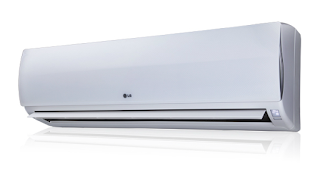Window Air Conditioners Win Hearts of Many…
Window air conditioners. Need I say more? It is probably the longest-serving, mechanical cycle, refrigerant filled air conditioner type that has served us longer than any other system available today.
Other air conditioners that look like a window unit, shares most of window AC features, but not exactly the same, are:
Overview of window air conditioners:
These air conditioners work, through the mechanical air conditioning cycle as explained in “How Air Conditioners Work”.
There are, however, some modifications put into place, such that these air conditioners will work with as high efficiency as possible. We’ll discover these in the next subsection.
Generally, window air conditioners’ sizes come in the range of,
- 5,000 BTU/hr (or 0.43 ton or 1.4 kWh or 1.1 hp), to
- 30,000 BTU/hr (or 2.45 ton or 8.6 kWh or 6.45 hp)
That is a wide range of conditioning capability for you.
The EERs however, come in a tighter range of,
- 9 EER, to
- 11 EER
The lower limit for the EER is not really an issue, but it is quite difficult to get window air conditioners with higher than 11 EER.
Design features:
Going into the features available in most window air conditioner
- These air conditioners can be installed in a window area, or through the wall.
However, installation through the wall has to be carried out, only if it is necessary to do so, as the process is labor-intensive, cost-intensive, and dust intensive
- It is hermetically constructed with galvanized steel casing and a plastic-based front grille
- You will notice that (while shopping on these air conditioners of course); window air conditioning units come in two general arrangements.
The arrangement is either a vertical, of the horizontal one. The former arrangement is normally used for window installation, and the latter, used for wall installation.
Which one is the best? It really depends on your window area or available wall area for the installation
- There are also two main construction types for window air conditioners.
The previous bullet point talked about the arrangement, this one is on the construction. These two are different.
Construction of window air conditioning units is either,
A fixed chassis, or
A sliding chassis.
Fixed chassis window air conditioner
Is installed as a whole unit. The rear end of the air conditioner can not be detached easily.
Hence, we have to put in the installation brackets and install the air conditioner as a whole.
Fixed chassis air conditioners are for lightweight units.
Major maintenance activities are carried out by taking out the whole unit out from the brackets and dismantling the unit. - Sliding chassis window air conditioner
Is installed in two stages, as these are conditioners are heavier than the former construction.
The rear end can be detached relatively easily. Installation is carried out by setting up the brackets and fixing the rear end of the casing, followed by sliding in the front part.
Major maintenance is carried out by sliding out the front part while maintaining the rear end on the brackets.
- There are other custom designated chassis names for window air conditioning units, unique to a manufacturer.
However, these names are only used to identify the unit better, and these are designated based on the installation procedures.
- If you are an owner or window air conditioner unit, then you must have, by now heard splashing sound from within the working component of the unit.
It is part of the design feature to do that, which is splashing condensed water onto the compressor, and condenser for cooling purposes.
It is designed such that, we’ll have a more efficient air conditioning unit.
On a similar note, window air conditioners are designed to hold about 1/2 inch of water near the condensing section
- Condensing part, and evaporating part will be separated by a heat insulator, to prevent heat from the condenser to be transferred to the evaporating unit.
This part of the construction is similar to portable air conditioners
- Some window air conditioners come with a separate dehumidifier function, where the air will be
Either
Passed through the evaporator for water condensation, and reheated for dry air
Installation and setup:
Installation and setup of window air conditioners vary from one manufacturer to another.
However, the general steps involved,
- Sizing the air conditioner,
- Knowing the dimensions of the matching air conditioner,
- Knowing the available space within the window, or wall,
- Purchasing the unit,
- Installing the brackets,
- Attaching the rear end case, or the whole unit (depending on the chassis type), onto the brackets,
- Support the top part of the air conditioner, and fasten it to the frame (window or wall),
- Fill with foam and filler material to the gaps between outside and inside,
- Wire the power supply, and you’re done!
Service and maintenance:
For
window air conditioners are similar to steps mentioned in air conditioning
maintenance page.
However, there is an additional step that you can take to make it more reliable.
Check the tightness of the installation, and filler material, periodically.
Make sure that the installation is tight to prevent excessive vibration and damaging the parts.
However, there is an additional step that you can take to make it more reliable.
Check the tightness of the installation, and filler material, periodically.
Make sure that the installation is tight to prevent excessive vibration and damaging the parts.



Comments
Post a Comment